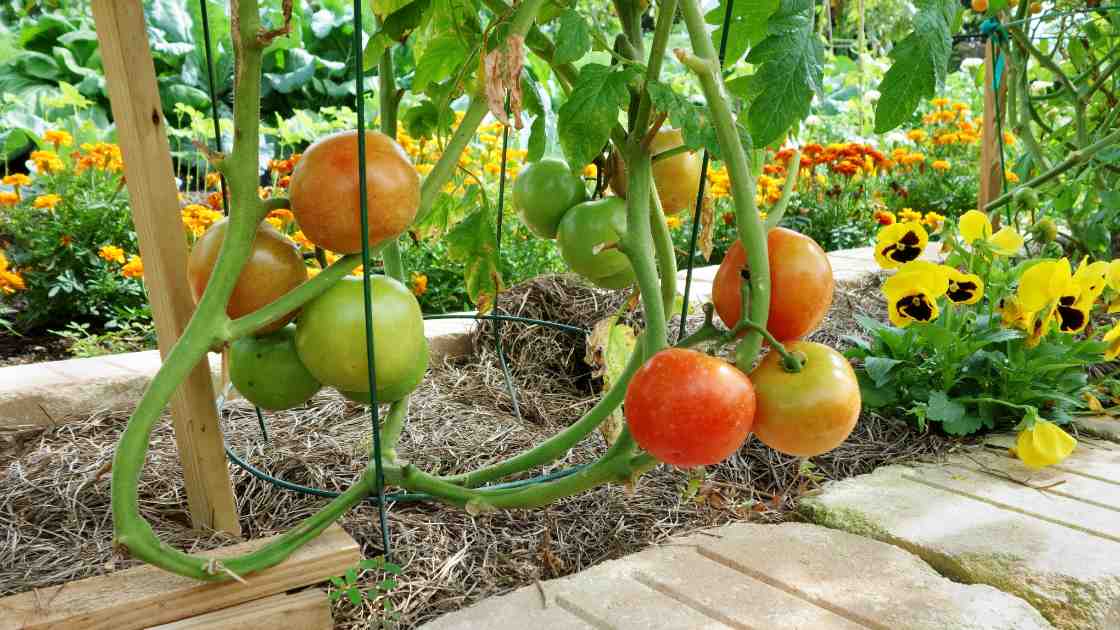Tomato plants require proper support to grow upright, avoid diseases, and bear fruit efficiently. While commercial tomato cages are available, making your own ensures they are sturdy, cost-effective, and tailored to your garden needs. This guide will walk you through making DIY tomato cages using different materials and methods.
Materials You’ll Need
Before getting started, gather the following materials:
- Wire mesh (concrete reinforcing wire or galvanized fencing wire)
- Wooden stakes or bamboo poles
- Zip ties, wire ties, or twine
- Wire cutters
- Gloves (to prevent cuts from wire)
- Measuring tape
- Pliers (for bending and securing wire)
Method 1: Making Tomato Cages from Wire Mesh
Step 1: Choose the Right Wire
Select a sturdy wire mesh such as concrete reinforcing wire or galvanized fencing. Ensure the openings are large enough (at least 6 inches) so you can easily reach in to harvest tomatoes.
Step 2: Measure and Cut the Wire
- Use a measuring tape to cut a section about 5 feet wide and 4-5 feet tall. This size will create a cage with a diameter of about 18 inches.
- Cut along the vertical wires to create separate sections.
Step 3: Shape the Cage
- Form a cylinder by bending the cut wire into a round shape.
- Overlap the edges by one square section and use zip ties, wire ties, or twine to secure it.
Step 4: Secure the Cage in the Ground
- Place the cage over your tomato plant.
- Push the bottom wires at least 6 inches into the soil or anchor it with stakes.
Method 2: Using Wooden Stakes or Bamboo Poles
If you prefer a more natural look, wooden stakes or bamboo poles can be used.
Step 1: Gather Sturdy Poles
- Use 3-4 wooden stakes or bamboo poles (5-6 feet tall).
Step 2: Arrange in a Teepee or Square Formation
- Place the poles around the tomato plant, evenly spaced.
- For a teepee cage, gather the tops of the poles together and tie them securely with twine or zip ties.
- For a square cage, use cross beams of smaller sticks tied to the main poles to create support.
Step 3: Secure the Structure
- Push the stakes 6-8 inches into the ground for stability.
- Use additional twine to create horizontal supports between the poles.
Method 3: Using Reinforcement Panels
Reinforcement panels (such as cattle panels) provide a durable and reusable option.
Step 1: Cut the Panel
- Cut a 4-5 foot section of a reinforcement panel using bolt cutters.
- Bend it into a circular or square shape.
Step 2: Secure the Cage
- Use metal ties or zip ties to hold the ends together.
- Push the cage into the ground around the plant or secure it with stakes.
Additional Tips for Sturdy Tomato Cages
- Choose rust-resistant materials to extend the life of the cage.
- Anchor cages properly to withstand strong winds.
- Prune tomato plants to ensure proper air circulation within the cage.
- Space cages 2-3 feet apart to allow room for plant growth and easy access.
FAQs
How tall should a tomato cage be?
A tomato cage should be at least 4-5 feet tall to provide adequate support for the plant as it grows.
Can I reuse homemade tomato cages?
Yes! Homemade tomato cages made from durable materials like wire mesh or reinforcement panels can be reused for multiple growing seasons.
Do tomato cages work for all tomato varieties?
Tomato cages are best suited for indeterminate (vining) tomatoes, but they can also help support determinate (bush) varieties.
Conclusion
Building your own tomato cages ensures durability, saves money, and supports healthy plant growth. Whether using wire mesh, bamboo stakes, or cattle panels, these DIY methods offer reliable support for your tomatoes throughout the growing season.




